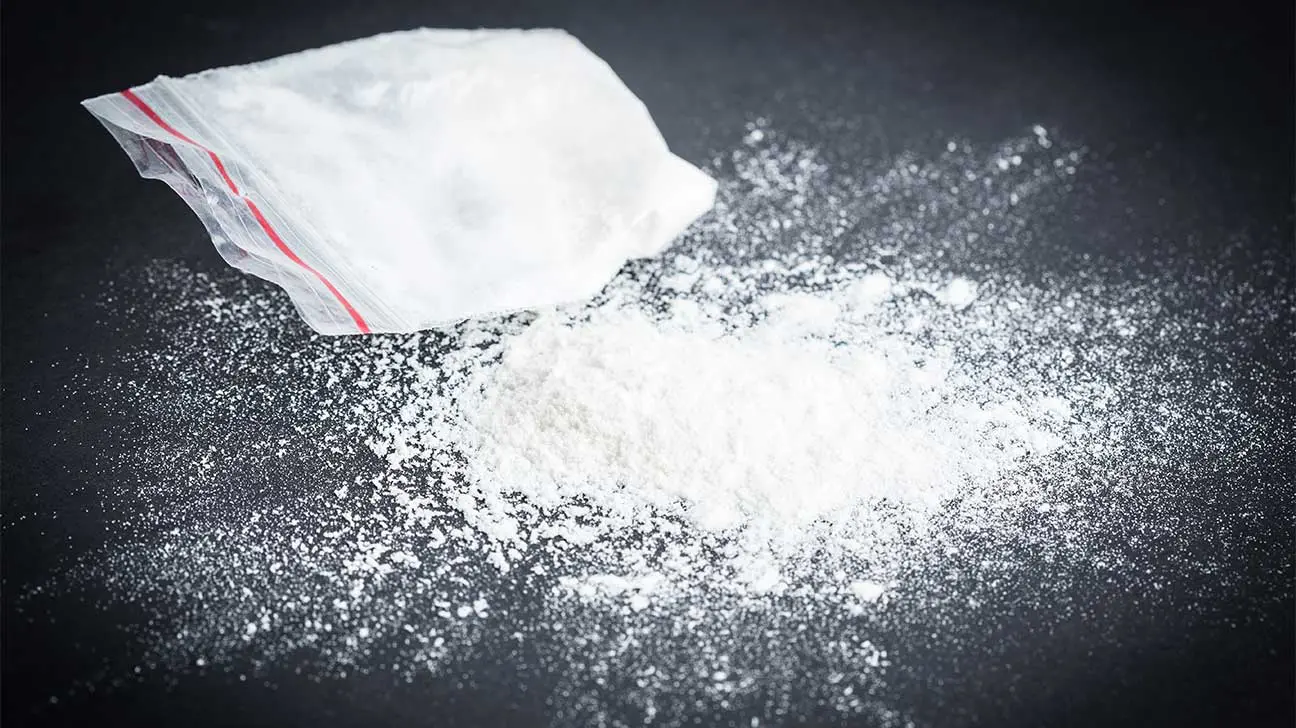
Accurate heroin identification involves understanding how the drug is made. Seedpods from the poppy plant are processed with a mixture of lime and water to extract all of the morphine that is in them. This morphine extract gets mixed together with ammonium chloride before it is filtered again.
The end result is a brown paste that is pressed into molds and left to dry. More chemicals get added to this base, and it gets filtered one more time. Finally, all that remains is a white substance that is so addictive that people can become hooked on it after using it just one time. Because of this, it is important to understand what heroin looks and smells like.
Identifying Heroin By Look, Smell, Paraphernalia, And Slang Names
Part of the heroin identification process requires knowledge of the packaging that the drug is often hidden in. The most common method of concealing heroin is to wrap it up in aluminum foil before putting it into little plastic bags.
But drug smugglers, which are commonly called “mules,” may also fill up empty capsules or balloons with the substance so they can swallow them. Once they get into the United States, the capsules or balloons are collected after they pass out of the body.
What Does Heroin Look Like?
What heroin looks like varies depending on what stage of the manufacturing process it is in and whether any other substances have been mixed in with it. More often than not, it looks like powdered sugar.
Drug dealers may mix some sugar in with heroin to increase their product’s weight. Pure heroin doesn’t have the crystalline appearance that sugar has, though. Baby powder has a finer texture, and is also white, so it may be added to the substance, too.
What Does Heroin Smell Like?
Powdered white heroin doesn’t have a noticeable smell to it because it is filtered so many times. Other versions of the substance will have a vinegar-like odor to them. In fact, the vinegar scent tends to permeate the clothing of those who smoke the substance.
It may also be noticeable in the room where they do drugs. There is a good chance that the drug paraphernalia used with heroin will smell like vinegar, too. What heroin smells like during the manufacturing process is different because of all the chemicals used to make it.
Recognizing Different Types Of Heroin
Heroin can be white, yellow, light brown, or black. If the substance is white, yellow, or brown, it is soft and powdery. Black heroin, which is also called “black tar,” is different because it is sticky and waxy.
If it is heated up, it often resembles ash. Fresh black-tar heroin is often very shiny. Brown heroin is cheap to purchase because it hasn’t been purified as thoroughly as white heroin, so it is usually smoked. White heroin is often diluted in water before it is injected into the body.
The stage of a person’s addiction often influences which type of heroin they prefer. Someone who just started out using the substance will typically only smoke it. After they build up a tolerance to it, which doesn’t take long, they will often switch to injecting it.
Identifying Heroin By Street Names
Heroin is highly illegal causing addicted individuals who want to buy it or hide their drug use from others refer to it by some of the following street names:
- Black eagle
- Black tar
- Brown sugar
- Dirt
- Salt
- White junk
- Spider blue
- Mexican horse
- Chinese red
- Mexican mud
- Hell dust
- Brick gum
- Big bag
- Good horse
- Antifreeze
- Foil
- Ferry dust
- Tootsie roll
What Does Heroin Paraphernalia Look Like?
Smoking, injecting, or snorting heroin requires some tools. Those who keep it on hand may not have it for long, but will try to conceal it while they do have it in their possession.
The following is a list of the most common types of heroin paraphernalia to look out for:
- small bags with foil packages inside
- pill bottles with unmarked capsules or powder
- balloons
- balled-up gum wraps with powder inside them
- strings and long elastic bands used for making tourniquets
- makeup bags and other pouches
- hypodermic needles
- spoons with burn marks on them
- drinking straws that have been cut up into small pieces
- glass pipes
Finding Treatment For Heroin Abuse
Heroin is an extremely addictive substance that causes serious withdrawal symptoms. Because of this, it is very dangerous for a person to quit using the drug on their own.
It is important that anyone who suspects their loved one may be using this substance gets them evaluated and treated at a drug and alcohol rehabilitation center right away, as heroin addiction can lead to vast consequences on health, including overdose. Those who need help finding a drug rehab center that specializes in heroin addiction treatment can contact one of our treatment specialists for assistance.
Addiction Resource aims to provide only the most current, accurate information in regards to addiction and addiction treatment, which means we only reference the most credible sources available.
These include peer-reviewed journals, government entities and academic institutions, and leaders in addiction healthcare and advocacy. Learn more about how we safeguard our content by viewing our editorial policy.
- National Institute on Drug Abuse — DrugFacts: Heroin
https://www.drugabuse.gov/publications/drugfacts/heroin - Get Smart About Drugs — How to Identify Drug Paraphernalia
https://www.getsmartaboutdrugs.gov/content/how-identify-drug-paraphernalia


